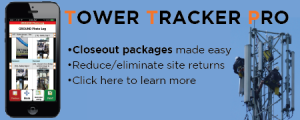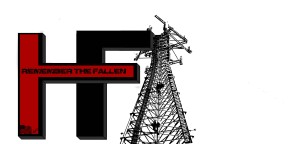Podcast: Play in new window | Download | Embed
Subscribe: Apple Podcasts | RSS
The carriers seem to be very slow this year on growth, at least wireless network growth. Oh sure, if you talk to them they are growing by leaps and bounds. But if you are in deployment, you are either busy or really slow. It seems like more of the same old work.
Don’t get me wrong, it’s nice to have the work that we see and I am grateful for it. I just don’t see much work outside of the carriers like before. The utilities seem to be satisfied with what they have and public safety is still holding their breath for a LTE system that could serve them outside of the carriers. You know, like what we all thought FirstNet would do. They apparently will be the government’s first MVNO. All that spectrum and we might as well wait for the 5G networks to roll out. Way to go FirstNet, you’re LTE system will be deployed along with the latest 5G system. Maybe you want to start the RFP process over again. (Sorry, just frustrated to see something so promising turn out to be late and “business as usual”!)
So where are we with the carriers. Well, Verizon is rolling with the normal growth that we all expect from the # 1 network. They appear to be adding towers and rolling out CRAN/oDAS with the intent to get the biggest bang they can with the spectrum they have. All this while working on a standard for 5G, I mean a real standard, not just lip service. Verizon rolls on with their plan to be the biggest and best. While all the other carriers say they are good enough, Verizon appears to dominate with coverage and reliability, at least that’s what I see.
AT&T seems to be in a hold pattern for wireless. I see them planning a lot but just doing what they have to. I really can’t believe it but from my perspective, they seem to be sending the message that Verizon is the best and we’re good enough. They have a great network and are clearly #2, but the whole DirecTV merger seems to have them more worried about bundling packages than improving the network. They add where they absolutely have to, but other than that, their good enough, right?
Then there is T-Mobile, the #3 carrier who seems to be pretty motivated to catch up to AT&T. This is their big chance with AT&T resting on its current network. I see T-Mobile doing more to roll out and densify the LTE system. They also have a pretty amazing marketing system, seriously, that John Legere looks like a genius from my vantage point. They continue to pump money into the network with improvements, densification, and wireless improvements. They may not catch up to Verizon anytime soon but WOW! They really are pushing the envelope and this is the perfect time to leave #4 in the dust.
Newsletter sign-up!
Subscribe–> iTunes or Stitcher or Overcast
Sprint is the #4 carrier and with the effort they’re putting into expand, it is no surprise to me. They have more spending cuts and are tighter with their money that the Scrooge was before Christmas! I feel bad for the people working there to be buried under all of that debt. I will say one thing, financially they seem to be pulling ahead. However, where will they be in 3 years when they have the only operational CDMA system, and not for nostalgia reasons but because they have to support voice in some way. They should be rolling out VoLTE soon, but will it be too late? If Verizon were smart they would sunset CDMA as soon as possible so that anyone who roams onto their system needs to have VoLTE.
 The Wireless Deployment Handbook eBook that covers professional carrier end to end deployment of LTE small cells, CRAN, and DAS showing you the proper way to plan for deployment then execute.
The Wireless Deployment Handbook eBook that covers professional carrier end to end deployment of LTE small cells, CRAN, and DAS showing you the proper way to plan for deployment then execute.
So what about the tower owners like American Tower, Crown Castle, and SBA? They play a huge part in this. The leases they have and the assets that they have will make them a serious partner in this because the carriers need to pay them a lot of money each month. They have pretty solid leases where companies can’t get out of them no matter what. They tie the carriers into long-term leases. All of this has made them really strong and a good long-term investment. However, some companies, like Sprint are going to do all that they can to reduce the number of leases with their move to roll out the new network on monopoles. I have to admit it’s a cool idea to save money. But let me ask you, what will is cost up front to do this? Is it worth it? Can they really save money by doing this? Will the municipalities and townships allow this? There is more to this than just saving the OpEx, the CapEx may not be worth it. Especially if they have no cash or high debt. Remember how much it costs to move a site? The tower owners know! They bank on that being an issue for the carriers when they set their rates. These guys are smart!
However, this makes it a ripe market for new companies to come in an offer better rates or maybe a disruptor to make a difference in the tower market. If someone could get a few key towers built then they would be ahead of the game, or would they? I have to tell you I personally have been in touch with several companies that wanted to build new towers and when they reached out to the carriers to see if there was interest, guess what the carriers said, N-O as in no. So why build it if they won’t come? So the carriers are shooting themselves in the foot, and I would bet it’s because they just don’t want to deal with the one-off towers. Then they complain about tower lease prices. OK carriers, then make a difference and move ahead with the smaller guys or stop complaining!
TOWER CLIMBING: AN INTRODUCTION (The book about getting started as a tower climber)
Let’s look at one more thing. The new FAA ruling requiring a 50’ tower to have lights in a residential area? Article found here, http://wirelessestimator.com/articles/2016/new-faa-rules-will-require-some-50-to-200-foot-towers-to-be-marked/ in case you don’t believe me. Painting is OK, I get that, but what if they require beacons? I know that the FAA should have one of these beacons near their house, they just made all neighborhood hate having any tower near them because they feel a plane that is 50’ off of the ground should be able to see the pole ahead of them. This is probably for the drones they expect to see but seriously, is the FAA smoking crack? If a drone can’t see the tower, then what? They should watch where they are going. They should not be flying at night. And if a plane is 50’ off of the ground in a residential neighborhood, like mine, I am going to be calling 911 and looking for a crash, seriously.
To digress even more, this is probably because of another report I read, https://www.faasafety.gov/files/notices/2010/May/Met_tower_Power_Point_St._Cloud.pdf. Why do I bring this up? If you look at this PDF, you see that all of the towers are in the middle of a field where the land is very flat. This is a case to put lights on smaller tower when there is absolutely nothing around. Again, for planes flying under 200 feet AGL, like the ultralight (which should be higher than 200’ and not fly over developments) and drones. I think to mandate this nationwide is a bit extreme and they just added a lot of work for approvals for new towers. The way I see it this will stunt tower growth even more, giving the leverage to the large tower companies, so for them it might be a pain to retrofit the towers, but the bigger picture is that they just put another nail in the coffin of startups.
If you though NIMBY was an issue before, get ready for a new line of complaints when people realize they will have to live with a beacon flash outside their window all night long. People complain about street lamps near them, can you imagine a beacon flashing outside of their window.
On the other hand, this should be a good thing for the small cell industry because they generally go on lower poles and could be put anywhere. So now the small cell will literally be right outside their window, at eye level.
All of this makes the tower owners even more powerful and gives them amazing control over the carrier’s destiny.
I have to admit, I am really impressed with Crown Castles investment into the small cell arena and the way that they advanced a single small cell site into multiple small cell and oDAS sites. This really makes them look like they are preparing for the future. They got the fiber and they have the assets. They also seem to have a good plan which puts them in a favorable position. If the carriers want to move away from these leases, then they should not have sold their towers, which they did to pay for the spectrum, right? How is that working out? The old saying, rob Peter to pay Paul, is coming back to haunt them. To be fair, I would have done the same thing, they got a great influx of money, they were able to reduce staff, and they gave them to companies that do tower leasing for a living. Now they need to pay the rent for the rest of their time on the tower.
So let me know what you think, email wade4wireless@gmail.com when you think of something to say!
Be smart, be safe, and pay attention!
Do you know what to put in your SOW, the details needed to get paid for milestones or job completion? Would it hold up in claims court? Would you rather plan up front instead of fighting for it after the job is done?
Scope of Work tutorial for the contractor to keep both sides doing the right thing for payment.














